 W
WThe Adjutant General's Corps is a corps in the British Army responsible for many of its general administrative services. As of 2002, the AGC had a staff of 7,000 people.
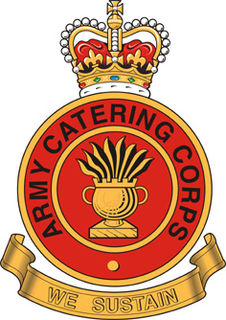 W
WThe Army Catering Corps (ACC) was a corps of the British Army, responsible for the feeding of all Army units. It was formed in 1941 and amalgamated into the Royal Logistic Corps in 1993.
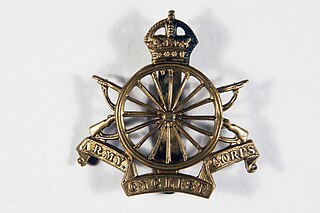 W
WThe Army Cyclist Corps was a corps of the British Army active during the First World War, and controlling the Army's bicycle infantry.
 W
WThe Army Legal Services Branch (ALS) is a branch of the Adjutant-General's Corps (AGC) in the British Army. Before 1992, the branch existed as the independent Army Legal Corps (ALC).
 W
WThe Army Medical Services (AMS) is the organisation responsible for administering the corps that deliver medical, veterinary, dental and nursing services in the British Army. It is headquartered in Camberley, near the Royal Military Academy Sandhurst.
 W
WThe Auxiliary Territorial Service was the women's branch of the British Army during the Second World War. It was formed on 9 September 1938, initially as a women's voluntary service, and existed until 1 February 1949, when it was merged into the Women's Royal Army Corps.
 W
WThe Cavalry Staff Corps was a unit formed during the Napoleonic Wars to keep discipline in the British Army. Consisting of four troops of cavalry, the corps was first raised in 1813 during the Peninsula War to deal with an excess of criminality and desertion in Wellington's armies. It was disbanded after that campaign ended in 1814 but was reformed in 1815 during the Hundred Days campaign. The corps also served in the subsequent occupation of France. The unit was Britain's first standing military police force. A successor unit was raised for service in the Crimean War of 1853–1856 and a permanent military police was established in 1877.
 W
WThe Corps of Army Music (CAMUS) is a Corps of the British Army dedicated to the provision and promotion of military music.
 W
WThe Corps of Royal Engineers, usually just called the Royal Engineers (RE), and commonly known as the Sappers, is a corps of the British Army. It provides military engineering and other technical support to the British Armed Forces and is headed by the Chief Royal Engineer. The Regimental Headquarters and the Royal School of Military Engineering are in Chatham in Kent, England. The corps is divided into several regiments, barracked at various places in the United Kingdom and around the world.
 W
WThe Egyptian Camel Transport Corps were a group of Egyptian camel drivers who supported the British Army in Egypt during the First World War's Sinai and Palestine Campaign. The work done by the 170,000 men of the Corps helped British war operations in the Sinai desert and in Palestine and Syria by transporting supplies to the troops in extreme geographic and weather conditions.
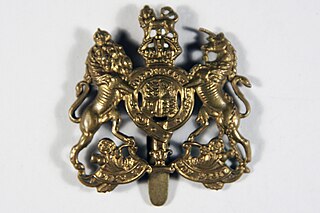 W
WThe General Service Corps (GSC) is a corps of the British Army.
 W
WThe Infantry of the British Army, part of the structure of the British Army, comprises 49 infantry battalions, from 19 regiments. Of these, 33 battalions are part of the Regular army and the remaining 16 a part of the Army Reserve. The British Army's Infantry forms a highly flexible organisation, taking on a variety of roles, including armoured, mechanised, air assault and light.
 W
WThe Joint Chemical, Biological, Radiological and Nuclear Regiment was a specialist expeditionary unit of the British armed forces. Personnel of the Joint CBRN Regiment were trained in the detection, identification and monitoring of nuclear, biological and chemical weapons.
 W
WThe Machine Gun Corps (MGC) was a corps of the British Army, formed in October 1915 in response to the need for more effective use of machine guns on the Western Front in the First World War. The Heavy Branch of the MGC was the first to use tanks in combat and was subsequently turned into the Tank Corps, later called the Royal Tank Regiment. The MGC remained in existence after the war until it was disbanded in 1922.
 W
WThe Military Provost Staff are the Army's specialists in custody and detention, providing advice inspection and surety within custodial establishments. The MPS form part of the Adjutant General's Corps and are based at the Military Corrective Training Centre (MCTC) in Colchester, Essex.
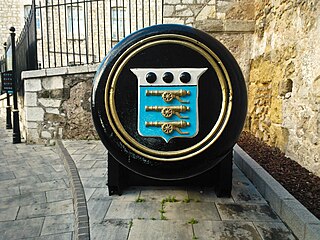 W
WThe Board of Ordnance was a British government body. Established in the Tudor period, it had its headquarters in the Tower of London. Its primary responsibilities were 'to act as custodian of the lands, depots and forts required for the defence of the realm and its overseas possessions, and as the supplier of munitions and equipment to both the Army and the Navy'. The Board also maintained and directed the Artillery and Engineer corps, which it founded in the 18th century. By the 19th century, the Board of Ordnance was second in size only to HM Treasury among government departments. The Board lasted until 1855, at which point it was disbanded.
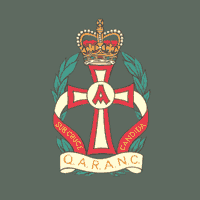 W
WQueen Alexandra's Royal Army Nursing Corps is the nursing branch of the British Army and part of the Army Medical Services.
 W
WThe Women's Army Auxiliary Corps (WAAC), known as Queen Mary's Army Auxiliary Corps (QMAAC) from 9 April 1918, was the women's corps of the British Army during and immediately after the First World War. It was established in February 1917 and disbanded on 27 September 1921.
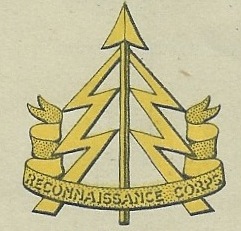 W
WThe Reconnaissance Corps, or simply Recce Corps, was a corps of the British Army, formed during the Second World War whose units provided the mobile spearhead of infantry divisions. It was formed from infantry brigade reconnaissance groups on 14 January 1941.
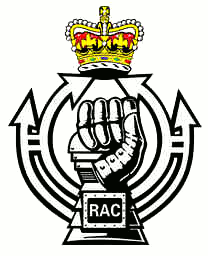 W
WThe Royal Armoured Corps (RAC) provides the armour capability of the British Army, with vehicles such as the Challenger 2 Tank and the Scimitar Reconnaissance Vehicle. It was created as a loose association of armoured regiments, both the Royal Tank Regiment and those converted from old horse cavalry regiments. Today it comprises fourteen regiments – ten regular and four Yeomanry.
 W
WThe Royal Army Chaplains' Department (RAChD) is an all-officer corps that provides ordained clergy to minister to the British Army.
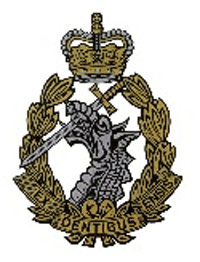 W
WThe Royal Army Dental Corps (RADC) is a specialist corps in the British Army that provides oral hygiene services to British Army personnel and their families in war and in peace. The corps is a part of the British Army's Army Medical Services.
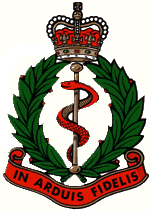 W
WThe Royal Army Medical Corps (RAMC) is a specialist corps in the British Army which provides medical services to all Army personnel and their families, in war and in peace. The RAMC, the Royal Army Veterinary Corps, the Royal Army Dental Corps and Queen Alexandra's Royal Army Nursing Corps form the Army Medical Services.
 W
WThe Royal Army Ordnance Corps (RAOC) was a corps of the British Army. At its renaming as a Royal Corps in 1918 it was both a supply and repair corps. In the supply area it had responsibility for weapons, armoured vehicles and other military equipment, ammunition and clothing and certain minor functions such as laundry, mobile baths and photography. The RAOC was also responsible for a major element of the repair of Army equipment. In 1942 the latter function was transferred to the Royal Electrical and Mechanical Engineers (REME) and the vehicle storage and spares responsibilities of the Royal Army Service Corps were in turn passed over to the RAOC. The RAOC retained repair responsibilities for ammunition, clothing and certain ranges of general stores. In 1964 the McLeod Reorganisation of Army Logistics resulted in the RAOC absorbing petroleum, rations and accommodation stores functions from the Royal Army Service Corps as well as the Army Fire Service, barrack services, sponsorship of NAAFI (EFI) and the management of staff clerks from the same Corps. On 5 April 1993, the RAOC was one of the corps that amalgamated to form The Royal Logistic Corps (RLC).
 W
WThe Royal Army Pay Corps (RAPC) was the corps of the British Army responsible for administering all financial matters. It was amalgamated into the Adjutant General's Corps in 1992.
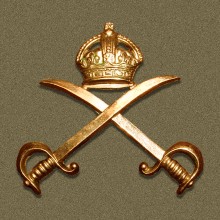 W
WThe Royal Army Physical Training Corps (RAPTC) is the British Army corps responsible for physical fitness and physical education and is headquartered in Aldershot. Its members are all Royal Army Physical Training Corps Instructors (RAPTCIs).
 W
WThe Royal Army Service Corps (RASC) was a corps of the British Army responsible for land, coastal and lake transport, air despatch, barracks administration, the Army Fire Service, staffing headquarters' units, supply of food, water, fuel and domestic materials such as clothing, furniture and stationery and the supply of technical and military equipment. In 1965 its functions were divided between other Corps and the RASC ceased to exist; subsequently, in 1993, they in their turn became the "Forming Corps" of the Royal Logistic Corps.
 W
WThe Royal Army Veterinary Corps (RAVC), known as the Army Veterinary Corps (AVC) until it gained the royal prefix on 27 November 1918, is an administrative and operational branch of the British Army responsible for the provision, training and care of animals. It is a small corps, forming part of the Army Medical Services.
 W
WThe Royal Regiment of Artillery, commonly referred to as the Royal Artillery (RA) and colloquially known as "The Gunners", is the artillery arm of the British Army. The Royal Regiment of Artillery comprises thirteen Regular Army regiments, King's Troop Royal Horse Artillery and five Army Reserve regiments.
 W
WRoyal Corps of Military Surveyors and Draftsmen was a British military corps under the Board of Ordnance formally established in 1800 and disbanded in 1817. It was one of the predecessors of the Ordnance Survey.
 W
WThe Royal Corps of Signals is one of the combat support arms of the British Army. Signals units are among the first into action, providing the battlefield communications and information systems essential to all operations. Royal Signals units provide the full telecommunications infrastructure for the Army wherever they operate in the world. The Corps has its own engineers, logistics experts and systems operators to run radio and area networks in the field. It is responsible for installing, maintaining and operating all types of telecommunications equipment and information systems, providing command support to commanders and their headquarters, and conducting electronic warfare against enemy communications.
 W
WThe Royal Corps of Transport (RCT) was a British Army Corps established to manage all matters in relation to the transport of men and material for the Army and the wider Defence community. It was formed in 1965 and disbanded in 1993; its units and trades were amalgamated into the Royal Logistic Corps. The Depot and Training Regiment RCT was at Buller Barracks in Aldershot.
 W
WThe Corps of Royal Electrical and Mechanical Engineers is a corps of the British Army that maintains the equipment that the Army uses. The corps is described as the "British Army's Professional Engineers".
 W
WThe Royal Horse Artillery (RHA) was formed in 1793 as a distinct arm of the Royal Regiment of Artillery to provide horse artillery support to the cavalry units of the British Army..
 W
WThe Royal Logistic Corps (RLC) provides logistic support functions to the British Army. It is the largest Corps in the Army.
 W
WThe Royal Military Police (RMP) is the corps of the British Army responsible for the policing of army service personnel, and for providing a military police presence both in the UK and while service personnel are deployed overseas on operations and exercises. Members of the RMP are often known as 'Redcaps' because of the scarlet covers on their peaked caps and scarlet coloured berets.
 W
WThe Royal Pioneer Corps was a British Army combatant corps used for light engineering tasks. It was formed in 1939 and amalgamated into the Royal Logistic Corps in 1993. Pioneer units performed a wide variety of tasks in all theatres of war, including stretcher-bearing, handling all types of stores, laying prefabricated track on beaches, and effecting various logistical operations. Under Royal Engineers supervision, they constructed airfields and roads and erected bridges; they constructed the Mulberry Harbour and laid the Pipe Line Under the Ocean (PLUTO).
 W
WThe Royal Waggon Train was the name originally given to the Supply and Transport branch of the British Armed Forces, which would eventually become the Royal Logistic Corps.
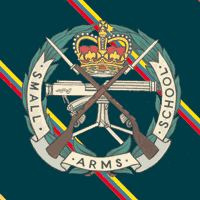 W
WThe Small Arms School Corps (SASC) is a small corps of the British Army, established in 1853 by Lord Hardinge. Its personnel provide advice and instruction to infantry weapon trainers throughout the army, in order to maintain proficiency in the use of small arms and support weapons, and in range management.